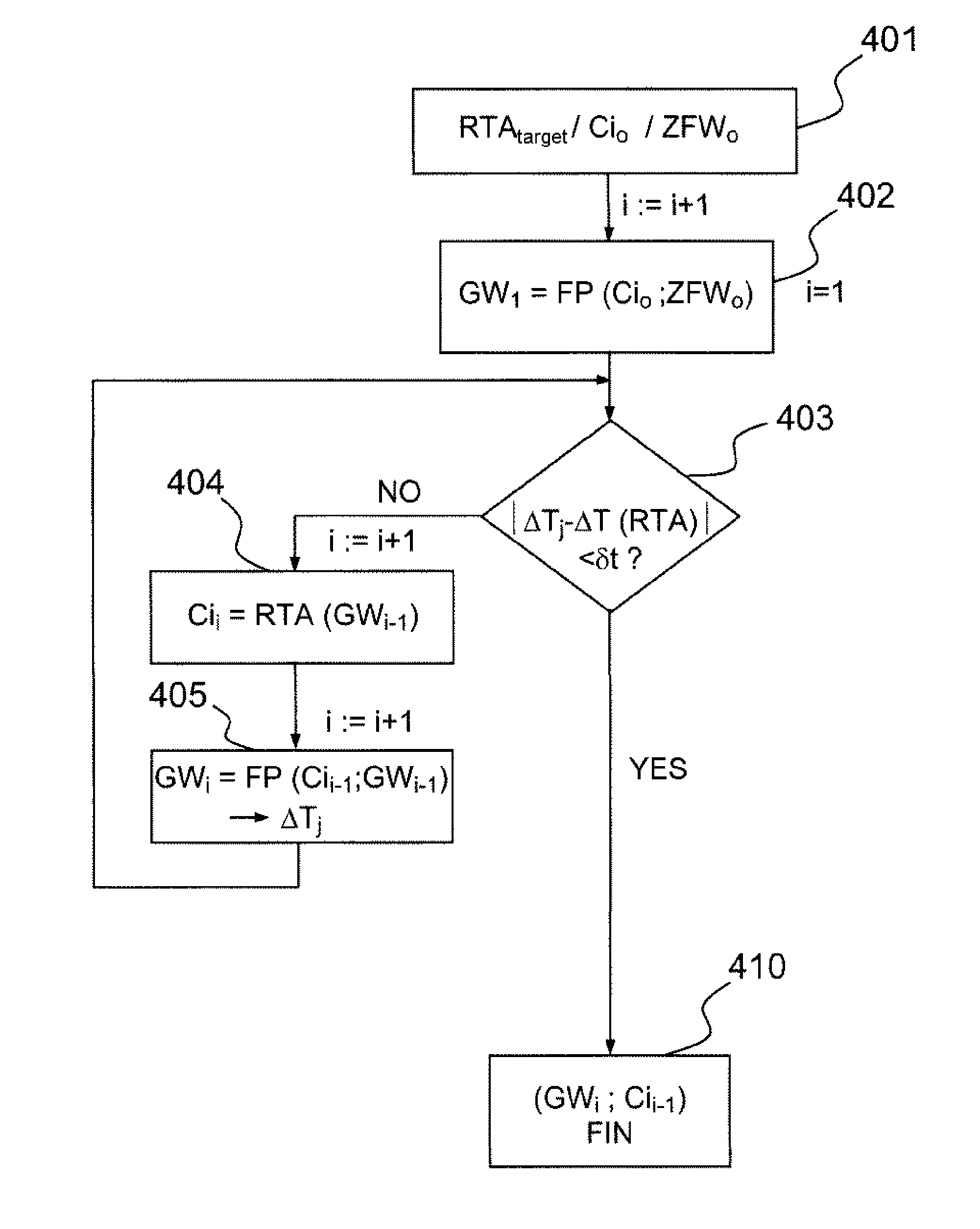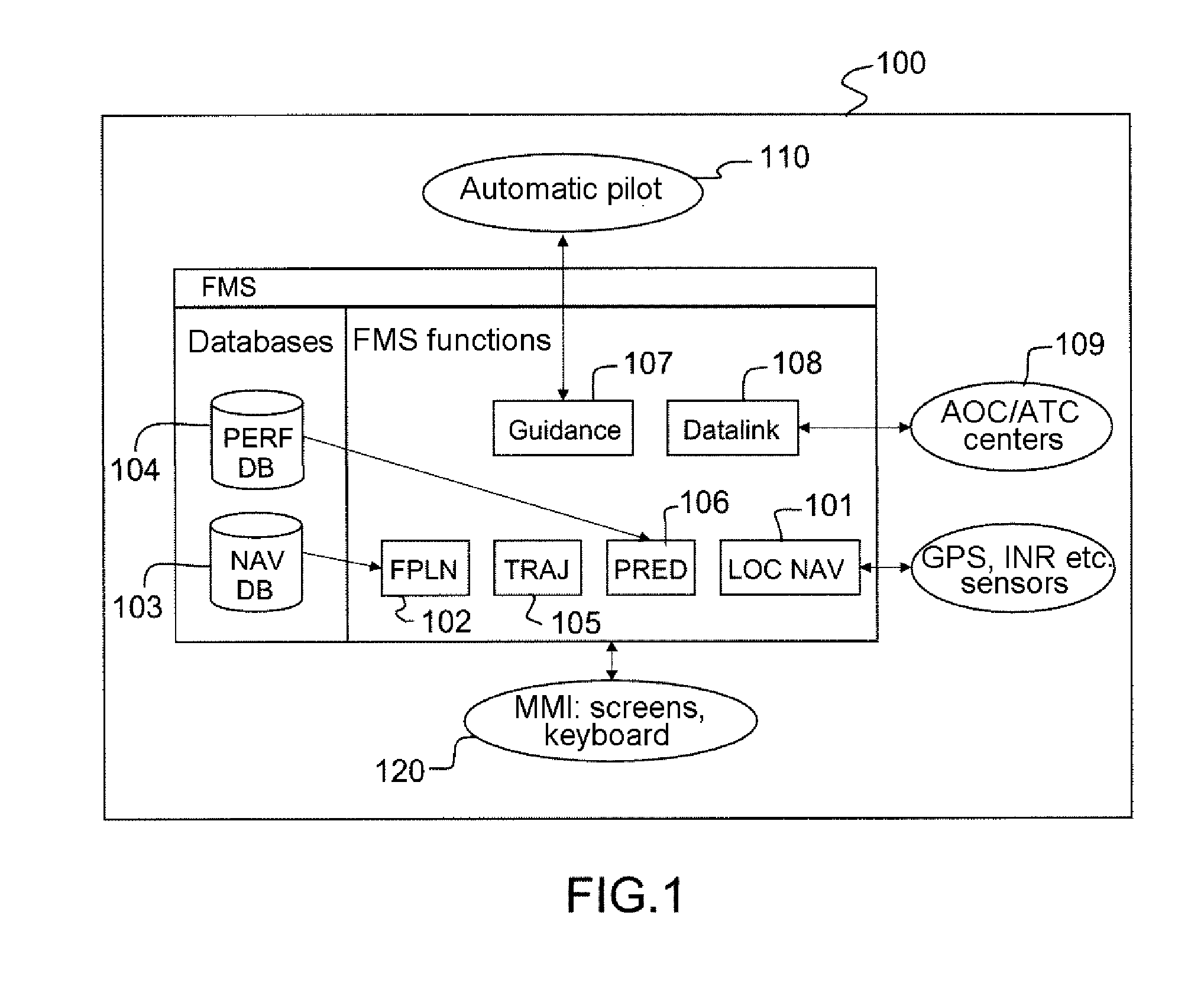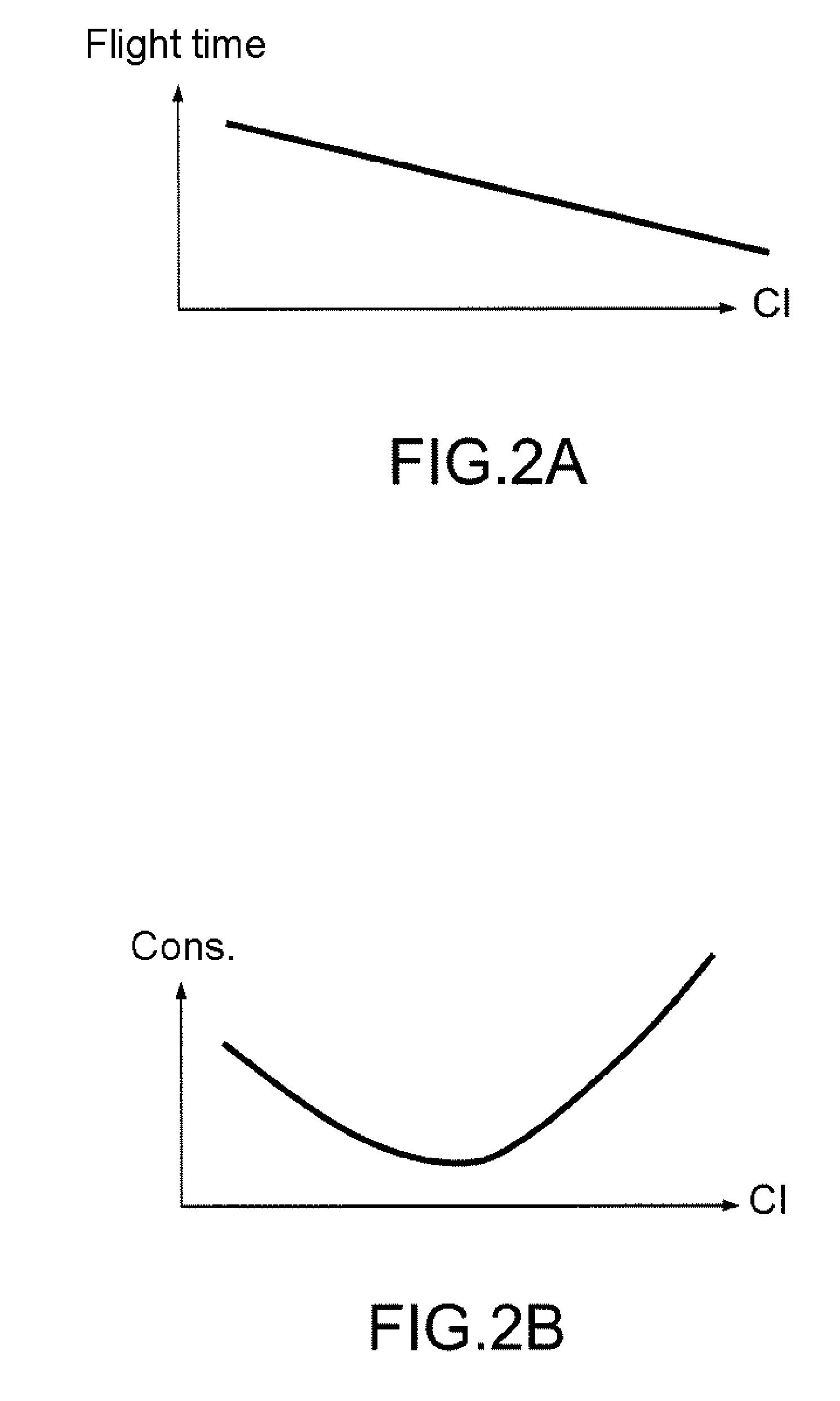Method for Determining the Quantity of Fuel Taken On Board an Aircraft Making it Possible to Maintain a Time Requirement of the RTA Type
a technology for determining the quantity of fuel taken on board an aircraft and maintaining the time requirement of the rta type, which is applied in the direction of process and machine control, instruments, navigation instruments, etc., can solve the problem that the known method of fuel planning is not compatible with the rta maintenance method
- Summary
- Abstract
- Description
- Claims
- Application Information
AI Technical Summary
Benefits of technology
Problems solved by technology
Method used
Image
Examples
Embodiment Construction
[0037]FIG. 1 shows a summary diagram illustrating the structure of a flight management system of the FMS type, known in the prior art.
[0038]A system of the FMS type 100 has a man-machine interface 120 comprising for example a keyboard and a display screen, or simply a touch-sensitive display screen, and at least the following functions described in the aforementioned ARINC 702 standard:[0039]Navigation (LOCNAV) 101, in order to optimally locate the aircraft as a function of the geolocation means 130 such as global positioning by satellite or GPS, GALILEO, VHF radionavigation beacons, or inertial units. This module communicates with the aforementioned geolocation devices;[0040]Flight plan (FPLN) 102, for entering the geographic elements forming the skeleton of the route to be followed, such as the points imposed by the departure and arrival procedures, the waypoints, and the air corridors or airways;[0041]Navigation database (NAVDB) 103, for constructing geographic routes and procedu...
PUM
 Login to View More
Login to View More Abstract
Description
Claims
Application Information
 Login to View More
Login to View More - R&D
- Intellectual Property
- Life Sciences
- Materials
- Tech Scout
- Unparalleled Data Quality
- Higher Quality Content
- 60% Fewer Hallucinations
Browse by: Latest US Patents, China's latest patents, Technical Efficacy Thesaurus, Application Domain, Technology Topic, Popular Technical Reports.
© 2025 PatSnap. All rights reserved.Legal|Privacy policy|Modern Slavery Act Transparency Statement|Sitemap|About US| Contact US: help@patsnap.com



